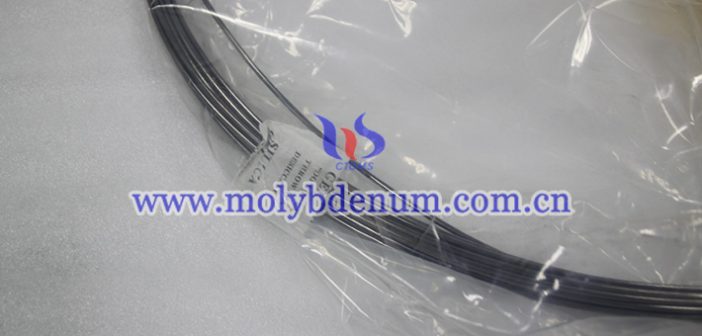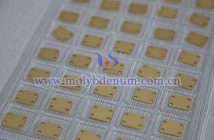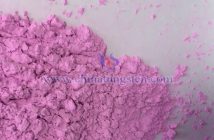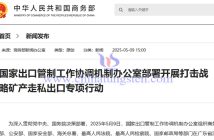Molybdenum wire, as a crucial metal material, is widely used in multiple high-tech fields. The manufacturing process is the key to ensuring its performance, requiring highly precise and stringent procedures. The production of molybdenum wire involves a series of complex steps, from raw molybdenum ore to the final product.
Below is an overview of the main manufacturing processes and steps.
1. Extraction and Refinement of Molybdenum
The production of moly wire begins with the extraction of molybdenum from molybdenum ores, such as molybdenite (MoS?). The refining process typically combines pyrometallurgical and chemical methods.
Pyrometallurgical Processing: The ore is heated at high temperatures to separate molybdenum from other minerals.
Chemical Purification: Further refining is performed through chemical reactions to obtain high-purity molybdenum.
The purity of molybdenum is crucial for subsequent processing because only high-purity molybdenum can ensure the stability of the wire under high-temperature and high-strength conditions.
2. Forming Molybdenum Rods or Sheets
After purification, molybdenum metal is processed into rods or sheets through forging or rolling. This step serves to reshape the metal and increase its surface area, making it suitable for subsequent wire drawing processes.
Since molybdenum is a hard and brittle metal, its processing requires specialized equipment and high-temperature conditions to reduce brittleness and improve workability.
3. Wire Drawing Process
Once molybdenum rods or sheets are prepared, the wire drawing process begins. Molybdenum wire is typically produced using cold drawing or hot drawing methods:
Cold Drawing: Used for smaller-diameter wires, offering better precision.
Hot Drawing: Applied to larger-diameter wires, where heating reduces material hardness and improves workability.
During the wire drawing process, the molybdenum rod is repeatedly stretched, gradually reducing its diameter until the desired wire thickness is achieved. The diameter of moly wire can range from a few micrometers to several millimeters, depending on the application.
To ensure uniformity and surface quality, annealing treatment is performed during the drawing process. Annealing involves heating the moly wire in a controlled furnace, optimizing its grain structure, relieving internal stress, and enhancing its mechanical properties and flexibility.
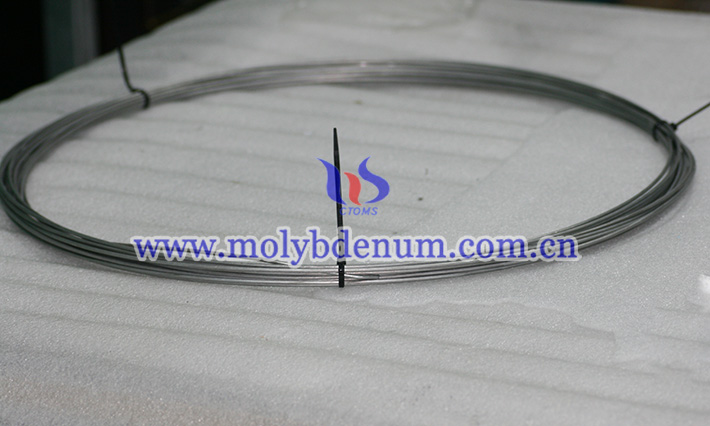
4. Surface Treatment
Surface treatment is a critical step in moly wire manufacturing. The drawing and stretching process can create oxide layers on the wire’s surface, which can affect its electrical conductivity and corrosion resistance. Therefore, the wire undergoes treatments such as:
Acid Pickling: Removes oxidation and impurities.
Protective Coating: Enhances oxidation resistance and extends the wire's lifespan.
Proper surface treatment not only improves oxidation resistance but also prevents deterioration when exposed to high-temperature or chemical environments.
5. Quality Inspection and Performance Testing
The final molybdenum wire product must undergo rigorous testing to ensure stability in both performance and quality. Common inspection procedures include:
Tensile Strength Testing: Evaluates mechanical durability.
Surface Examination: Ensures a smooth and defect-free finish.
Metallographic Analysis: Confirms uniform grain structure and purity.
Different industries require specific performance standards. For example:
High-temperature electrical applications demand excellent conductivity and heat resistance.
Precision electronic components require a highly smooth surface finish and precise dimensions.

